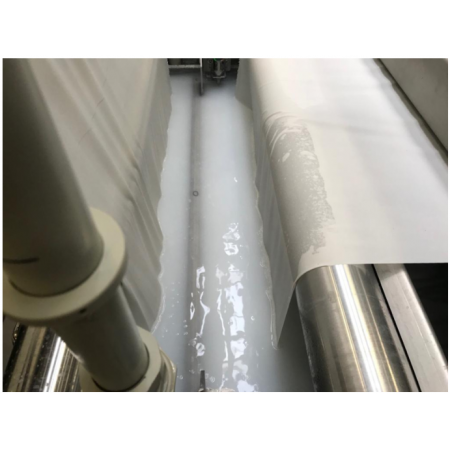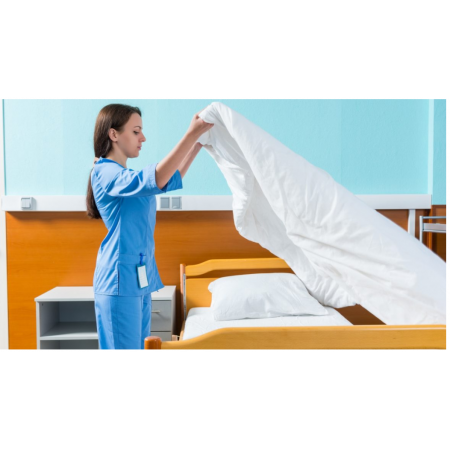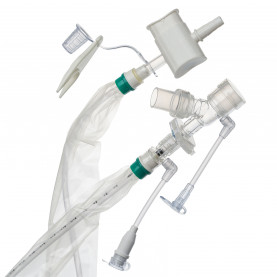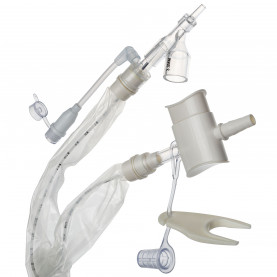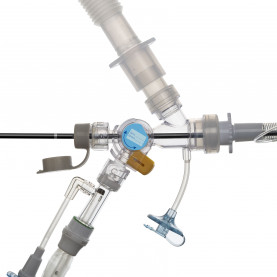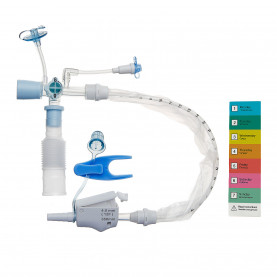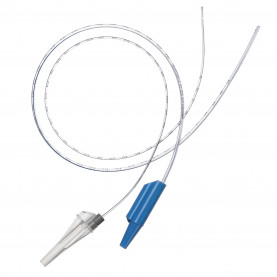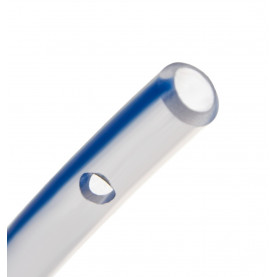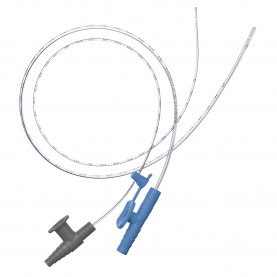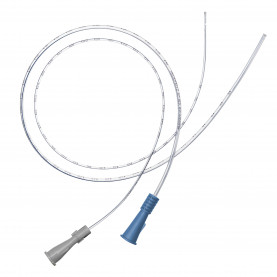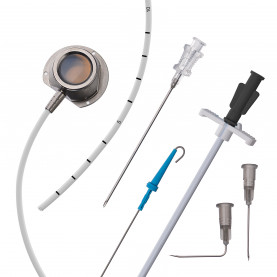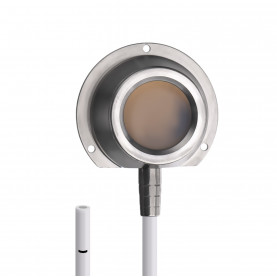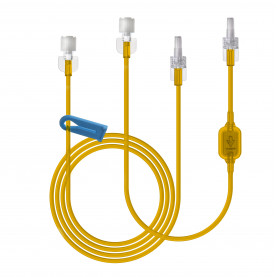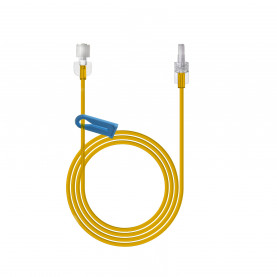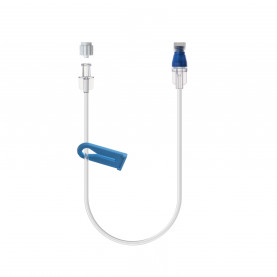New invention to make hospital bedding germ-resistant
Hospital bedsheets and patient gowns are a major conduit for transferring dangerous bacteria estimated to infect 1.7 million hospitalized Americans and 3.5 million hospitalized Europeans every year. In the United States, hospital-acquired infections kill about 98,000 people yearly.
While the materials used to make these items generally contain an antibacterial coating, it washes out after as few as 15 cleaning cycles.
Chemistry professors Aharon Gedanken and Ilana Perelshtei from Bar-Ilan University have developed a new way to bacteria-proof the fabrics used in a hospital.
Their method uses ultrasound waves to induce a physical phenomenon known as “cavitation,” in which rapid changes of pressure in a liquid lead to the formation of tiny vapor-filled cavities. Antibacterial chemicals can then be propelled onto the molecular structure of the fabric at tremendous speed.
The technique can be used at the final stage of manufacturing and works with all types of fabric.
That compares with the two main technologies for making antibacterial fabric today: “extrusion,” in which silver, copper or zinc particles are inserted into the raw material used to make synthetic fibers, and “fabric finishing,” which adds an antibacterial liquid to the manufacturing process, which then chemically binds to the fabrics. Israeli company Cupron is a leader in using the extrusion method.
Both methods are limited to polymer-based fabrics, so they can’t be used for cotton or nylon. And they’re highly polluting, both in the manufacturing process and at point of use, where the chemicals can leach out of the fabric.
Gedanken and Perelshtein’s technique uses far fewer chemicals while maintaining a fabric’s antibacterial properties for up to 65 launderings at 92 degrees Celsius or 100 washing cycles at 75 degrees Celsius.
In 2009, the European Union gave the professors a €12 million grant to assemble a consortium of 16 manufacturers, universities and government agencies to develop and test the technology. A 60-centimeter machine was built, and thousands of meters of fabric were coated. A clinical trial was conducted in a hospital in Bulgaria.
In 2013, the project was spun out of the university into a company called Nanotextile, which received a global license from Bar-Ilan to commercialize the technology. The license, however, excluded North America and raising money therefore became nearly impossible, so the company stalled.
It wasn’t until 2017, when Nanotextile renegotiated the acquisition of a North American license, that the potential of Gedanken and Perelshtein’s antibacterial innovation finally took off.
The company was rebranded as Sonovia. Elli Assa, an Israeli textile industry executive and senior lecturer at the Shenkar College of Engineering, Design and Art, was recruited as CEO.
One of Assa’s first acts was to ink a deal with Bruckner Textile Machinery, a leading manufacturer with experience in the extrusion technique for antibacterial coating. The companies together designed a pilot machine based on Sonovia’s technology. The sheets could be used in hospitals as early as next year.
Microbubbles
Sonovia’s vice president of business development Roy Hirsch described to ISRAEL21c how the company’s technology works.
“Microbubbles form inside a specially-designed chemical solution using ultrasound waves,” Hirsch says. “Outside the bubbles, the temperature might be 40 degrees Celsius, but inside it’s around 5,000 degrees. The bubbles collapse and shoot a jet stream onto the nearest surface. It’s like shooting a bullet out of a gun. Inside the solution, there will be thousands of these microbubbles, collapsing and shooting only the chemicals we want onto the surface of the fabric.”
This shooting process attaches the antibacterial chemicals onto the fabric without the need for chemical binders. “This results in a reduction of 50 percent of the chemicals in the finishing process,” Hirsch says.
The bubbles are tiny, but they’re not quite nano-sized, which is defined by regulatory agencies as between one to 100 nanometers.
“We’re operating in 150-200 nanometers,” Hirsch says. That’s still small, but it necessitated a name change from Nanotextile to Sonovia. “Sono” comes from a process known as “sono-chemical coating.”
According to Sonovia’s partnership with Bruckner, the latter will manufacture and market the machine, while Sonovia will sell the chemicals. It’s the same model that printer manufacturers like HP employ, where the printer itself is relatively inexpensive and HP makes money by selling the ink. Sonovia’s chemicals, like printer ink, are consumables that need to be replaced.
Fire-, water- and odor-proof
Like many good startup stories, a surprising twist happened shortly after Sonovia was established: Assa and his team realized that the technology Gedanken and Perelshtein had developed was relevant to more than just antibacterial sheets.
It could be used for all manner of textile additions – for example, it could make fabrics fire resistant, water repellant and even body odor-proof.
“We can make a shirt that prevents body odor and lasts longer than similar shirts on the market,” Hirsch says.
Moreover, Sonovia’s process, which reduces the amount of chemicals required, is exactly what textile manufacturers – who are becoming increasingly concerned with the environmental impact of their products – have started to demand.
That’s what another company ISRAEL21c has written about recently discovered. Twine has built a machine to digitally print colors onto thread, eliminating much of the water and chemicals used in the traditional thread-dyeing process.
“We think Twine is brilliant,” Hirsch says. “It’s a completely different technology with completely different customers, but it’s a blessing what they’re doing.”
Jerusalem-based Argaman is also developing antibacterial sono-coatings, Hirsch notes. “However, they focus on treating threads rather than ready-made fabrics, and their business model is a coating center serving the textile industry, meaning you have to ship threads back and forth.” In contrast, Sonovia will place its machines in textile mills.
“The textile industry has basically been operating in the same way for years,” Hirsch says. “It’s unsustainable. China is closing hundreds of plants because of pollution. Regulation is increasing. This industry will transform into something completely different. “
Hirsch says brands have started to pick up on consumers’ desire to wear clothing produced in a less polluting way.
Sonovia was picked in 2017 to participate in the Fashion for Good Plug and Play Accelerator in Amsterdam, intended for startups trying to make the fashion industry more environmentally friendly and socially aware.
It was in the accelerator that Sonovia began developing its fire- and water-resistant products. Sonovia received a $230,000 investment from the accelerator when it “graduated” last year. The company is now in a follow-up program that Hirsch says will grant Sonovia access to high-end brands such as Gucci and Calvin Klein.
Gedanken and Perelshtein are advisers to the company while continuing their work at Bar-Ilan. Sonovia has raised $1.3 million in addition to the original European Union grant.
“The fashion industry is one of the biggest polluters in the world,” Hirsch says. If Sonovia succeeds, it can help reduce the amount of chemicals wasted, keep hospital patients safer from superbugs, and producing what Hirsch promises will be “fabric that will always feel as soft as when it left the store.”


